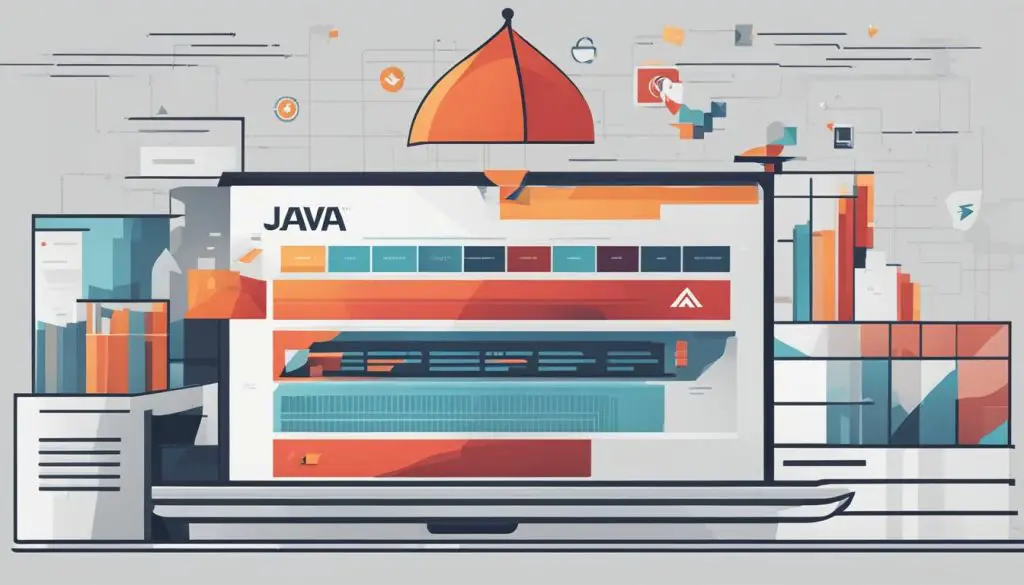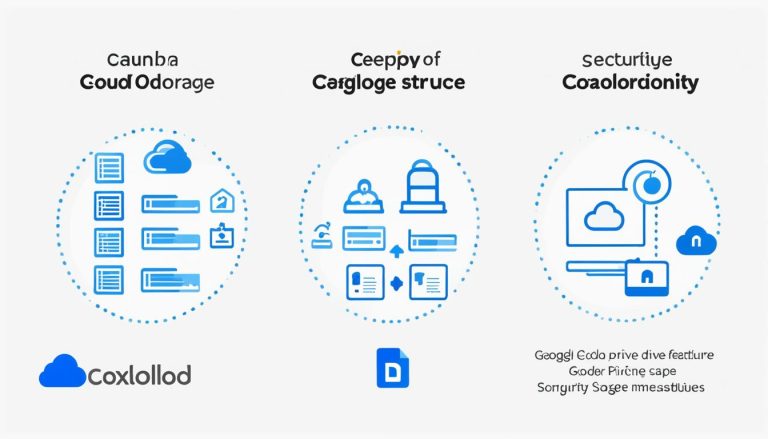What is Java? A Comprehensive Overview.
Welcome to this comprehensive overview of Java, where we will explore everything you need to know about this popular programming language. From its basics to its history, features, and applications, we will cover it all. So, let’s dive into the world of Java and discover what makes it such a powerful and versatile language.
Key Takeaways:
- Java is an object-oriented programming language used in various applications.
- It was invented by James Gosling and Sun Microsystems in 1991.
- Java is known for its simplicity, platform independence, and extensive features.
- It is widely used in web and mobile applications, game development, and embedded systems.
- Learning Java can open up many career opportunities, and certifications can enhance your skills and job prospects.
History of Java
I’m excited to dive into the fascinating history of Java, a programming language that has revolutionized the world of software development. Java was originally developed by James Gosling and Sun Microsystems in 1991 and has since become one of the most widely used programming languages.
Initially called Oak, the language was later renamed to Green before finally settling on the name Java. The inspiration for this name came from the coffee brewed in Java, an Indonesian island known for its rich and flavorful coffee beans.
The first release of Java, Java 1.0, was made available in 1995. This version introduced a range of features and capabilities that set Java apart from other programming languages. It quickly gained popularity among developers due to its simplicity and platform independence.
One significant milestone in Java’s history occurred in 2006 when Sun Microsystems released it as free and open-source software under the GNU General Public License. This move further accelerated its adoption, making it accessible to a wider audience and sparking innovation within the Java community.
Key Highlights:
- Java was developed by James Gosling and Sun Microsystems in 1991.
- The language was initially called Oak and was later renamed to Green before settling on the name Java.
- Java 1.0 was released in 1995, introducing a range of features and capabilities.
- In 2006, Java became free and open-source software.
As we continue to explore Java, we’ll delve deeper into its usage and the wide array of applications it supports.
What is Java Used For?
Java is a versatile programming language with multiple applications across different industries. Its robustness, compatibility, and extensive libraries make it a popular choice for various development projects.
One of the key areas where Java is widely used is in web development. Many popular websites and web applications, including banking platforms, e-commerce sites, and content management systems, rely on Java to deliver dynamic and interactive user experiences. Java’s ability to handle complex tasks and support large-scale applications makes it an ideal choice for web development.
Mobile application development is another domain where Java finds extensive usage. With the rise of smartphones and the demand for feature-rich mobile apps, Java provides a platform-independent solution. Android, one of the most popular mobile operating systems, uses Java as its primary programming language, enabling developers to create powerful and user-friendly mobile applications.
In the gaming industry, Java is widely utilized for game development. Its object-oriented approach, extensive libraries, and cross-platform compatibility make it suitable for creating games that can run on multiple devices. From simple 2D games to complex virtual reality experiences, Java’s versatility allows developers to create immersive gaming experiences.
Additionally, Java is widely used in embedded systems, which are computer systems dedicated to specific functions within larger systems. From smart home devices, medical equipment, and automotive systems to industrial control systems, Java provides the flexibility and reliability required for embedded system development.
In summary, Java is utilized in a wide range of applications, including web development, mobile applications, game development, and embedded systems. Its versatility, platform independence, and extensive features make it a popular choice among developers across various industries.
Java Concepts and Features
Java is an object-oriented programming language that incorporates several key concepts and features, making it a popular choice among developers. Understanding these concepts is essential for mastering Java and building robust software applications.
Inheritance
Inheritance is a fundamental concept in Java that allows a class to inherit properties and behaviors from another class. It promotes code reuse and enables the creation of hierarchical relationships between classes. By inheriting from a superclass, a subclass inherits all of its methods and variables, reducing code duplication and enhancing code organization.
Polymorphism
Polymorphism refers to the ability of an object to take on multiple forms. In Java, it allows objects of different classes to be treated as objects of a common superclass. Polymorphism enables flexibility and extensibility in software design, allowing methods to be overridden in subclasses to provide specific implementations while still adhering to a common interface.
Abstraction
Abstraction is the process of simplifying complex systems by representing only the essential features and hiding unnecessary details. In Java, abstraction is achieved through abstract classes and interfaces. Abstract classes provide a blueprint for creating derived classes and can contain both abstract and concrete methods. Interfaces define a contract that implementing classes must adhere to, ensuring consistency and interoperability.
Encapsulation
Encapsulation is the practice of bundling data and methods together within an object, hiding internal details from outside entities. It enhances code maintainability by preventing direct access to underlying data, allowing developers to control access via getter and setter methods. Encapsulation also promotes code reusability and modularity, as objects can be easily reused and modified without affecting other parts of the codebase.
By understanding and utilizing these key concepts and features, developers can harness the full power of Java and build efficient, scalable, and maintainable software applications.
Java Components
Java consists of three main components: the Java Virtual Machine (JVM), the Java Runtime Environment (JRE), and the Java Development Kit (JDK). These components work together to enable the creation, execution, and development of Java applications across different platforms.
The JVM is responsible for executing Java programs. It acts as an interpreter, translating the Java bytecode into machine code that can be understood by the underlying operating system. The JVM provides a runtime environment for Java programs to run efficiently and consistently, regardless of the operating system being used.
The JRE is a collection of libraries and tools that are required to run Java applications. It includes the JVM, along with additional resources such as class libraries, application programming interfaces (APIs), and other runtime components. The JRE provides all the necessary files and functionalities to execute Java applications without the need for development tools.
The JDK is a comprehensive set of tools and libraries used for developing Java applications. It includes the JRE, along with additional development and debugging tools like the Java compiler, debugger, and documentation generator. The JDK allows developers to write, compile, and test their Java code, as well as package it into executable files or deploy it to servers.
Table: Comparison of Java Components
| Component | Purpose | Key Features |
|---|---|---|
| JVM | Executes Java programs | – Translates bytecode into machine code – Provides memory management and garbage collection – Enables platform independence |
| JRE | Runs Java applications | – Includes JVM and supporting libraries – Provides runtime environment for Java programs – Ensures compatibility across platforms |
| JDK | Develops Java applications | – Includes JRE and development tools – Provides Java compiler and debugger – Enables code packaging and deployment |
The combination of these Java components allows developers to write, run, and maintain Java applications efficiently. The JVM ensures that Java programs can be executed on different operating systems, while the JRE provides the necessary runtime environment for running Java applications. The JDK, on the other hand, equips developers with the tools and libraries needed to create robust and scalable Java applications.
Java Learning Tips
Are you interested in learning Java and becoming a proficient programmer? Here are some valuable tips to help you on your learning journey:
- Start with the basics: Begin by understanding the fundamentals of programming, such as variables, data types, loops, and conditionals. Familiarize yourself with the syntax and structure of Java code.
- Utilize Java tutorials: There are numerous online tutorials available that provide step-by-step guidance on Java programming. These tutorials offer practical examples and exercises to reinforce your understanding.
- Practice regularly: The key to mastering Java is consistent practice. Code regularly and work on small projects to apply your knowledge and strengthen your programming skills.
- Stay updated: Java is a constantly evolving language, with new releases and updates introducing new features and improvements. Stay informed about the latest developments and best practices in Java programming.
- Consider Java certification: Obtaining a Java certification can boost your credibility and demonstrate your expertise to potential employers. There are several Java certifications available, such as Oracle Certified Associate (OCA) and Oracle Certified Professional (OCP).
By following these tips and investing time and effort into learning Java, you can become a proficient Java programmer and unlock a world of exciting career opportunities.
Testimonials
“I found online Java tutorials to be incredibly helpful during my learning journey. They provided clear explanations and practical examples that allowed me to grasp the concepts effectively.” – Amanda, Java Programmer
“Practicing regularly is crucial when learning Java. It helps solidify your understanding and builds your confidence as a programmer. Don’t be afraid to experiment and challenge yourself!” – Mark, Java Developer
Remember, learning Java is a continuous process. Embrace the challenges, stay motivated, and don’t hesitate to seek help from the vast Java community. Happy coding!
| Resource | Description |
|---|---|
| CodexWorld Java Tutorials | A comprehensive collection of Java tutorials covering various topics, from basic to advanced programming concepts. |
| Oracle Certified Professional Java SE Programmer Certification | An official Java certification offered by Oracle that validates your knowledge and skills in Java programming. |
| Java Programming Masterclass for Software Developers (Udemy) | A highly-rated online course that provides a comprehensive understanding of Java programming and helps you build real-world projects. |
Java Certifications
As a Java programmer, obtaining certifications can be a valuable investment in your career. Java certifications validate your knowledge and skills in Java programming, making you stand out in a competitive job market. Oracle, the company behind Java, offers a range of certifications that cater to different levels of expertise. Let’s explore some of the popular Java certifications provided by Oracle:
Oracle Certified Associate (OCA)
The Oracle Certified Associate (OCA) certification is the entry-level certification for Java programmers. It validates your fundamental understanding of Java and your ability to develop code using Java SE 8. This certification is a great starting point for beginners who want to showcase their Java programming skills to potential employers.
Oracle Certified Professional (OCP)
The Oracle Certified Professional (OCP) certification is the next level after OCA. It demonstrates your advanced knowledge and skills in Java programming and is designed for experienced Java developers. To earn this certification, you need to pass the Java SE 8 Programmer II exam. Having OCP certification enhances your credibility as a Java professional.
Oracle Certified Expert (OCE)
The Oracle Certified Expert (OCE) certifications are specialized certifications that focus on specific areas of Java programming. These certifications allow you to demonstrate your expertise in specific domains, such as Java EE and Java Web Services. Holding an OCE certification signifies your advanced skills and knowledge in these specialized areas.
Oracle Certified Master (OCM)
The Oracle Certified Master (OCM) certification is the highest level of Java certification offered by Oracle. This certification is designed for elite Java professionals who have demonstrated exceptional skills and expertise in Java programming. To earn the OCM certification, you need to pass a rigorous examination and undertake a hands-on programming assignment.
Obtaining Java certifications can give you a competitive edge in the job market and open up new career opportunities. Whether you are a beginner or an experienced Java programmer, investing in certifications can validate your skills and enhance your professional credibility.

Advantages of Java
Java is a powerful programming language with numerous advantages that make it a preferred choice for developers. Whether you are a beginner or an experienced programmer, Java offers a range of benefits that contribute to its popularity and widespread use.
Learning Resources and Community Support
When it comes to learning Java, there are abundant resources available to help you grasp the language and its concepts. Online tutorials, books, and video courses provide comprehensive guidance and allow you to learn at your own pace. The Java community is also highly active and supportive, with forums and online communities where you can seek assistance, share ideas, and collaborate with fellow developers.
Inbuilt Functions and Libraries
Java comes with a rich set of inbuilt functions and libraries that simplify development and increase productivity. These libraries offer pre-built modules for common tasks, such as handling input and output, networking, and database connectivity. By leveraging these resources, developers can save time and effort, focusing on the core logic of their applications.
Development Tools and Platform Independence
Java provides a wide range of development tools that enhance the coding experience. Integrated Development Environments (IDEs) like Eclipse and IntelliJ IDEA offer features like code completion, debugging, and refactoring, streamlining the development process. Moreover, Java’s platform independence allows code to run on multiple platforms without the need for major modifications. This cross-platform compatibility reduces the time and effort required to deploy applications on different operating systems.
Robust Security
Security is a top priority in today’s digital landscape, and Java offers robust measures to protect your applications. With features like bytecode verification, automatic memory management, and sandboxing, Java provides a secure environment where you can develop and execute code with confidence. The language’s built-in security features help prevent common vulnerabilities, making it a reliable choice for secure application development.
| Advantage | Description |
|---|---|
| Learning Resources and Community Support | Abundant learning resources and active community support make it easier to learn and master Java. |
| Inbuilt Functions and Libraries | Java provides a wide range of inbuilt functions and libraries that simplify development and increase productivity. |
| Development Tools and Platform Independence | Java offers a comprehensive set of development tools and allows code to run on multiple platforms without major modifications. |
| Robust Security | Java’s built-in security features provide a secure environment for developing and executing code. |
Java History: From Oak to Open-Source
Java has a fascinating history that dates back to its inception in 1991. It all began with James Gosling and his team at Sun Microsystems, who set out to create a new programming language for interactive television. They initially called it Oak, inspired by an oak tree outside Gosling’s office window. However, due to trademark conflicts, the name was changed to Green and eventually settled on Java, derived from the love of coffee in the team.
Java’s first release, Java 1.0, was launched in 1995, introducing the world to its groundbreaking features and platform independence. It quickly gained popularity among developers due to its simplicity and reliability. In a significant milestone, Sun Microsystems opened up Java as free and open-source software in 2006 under the GNU General Public License. This move paved the way for even broader adoption and community-driven innovation.
Today, Java stands tall as one of the most widely used programming languages globally, powering countless applications and systems. Its rich history, starting from the Oak language to the open-source Java we know today, is a testament to the dedication and ingenuity of the Java community.
Java’s evolution and success can be attributed to the visionary minds of James Gosling and the passionate Java community. From nurturing the Oak language to transforming Java into an open-source powerhouse, their contributions have shaped the programming landscape.– Java Enthusiast
To delve deeper into the history of Java, let’s explore a table that highlights key milestones and versions, starting from Oak to the open-source era.
| Year | Milestone | Version |
|---|---|---|
| 1991 | Development of Oak programming language begins | – |
| 1995 | Initial release of Java | Java 1.0 |
| 2006 | Java released as open-source software | Java SE 6 |
| 2011 | Introduction of Java SE 7 | Java SE 7 |
Java’s journey from Oak to open-source is a story of innovation, collaboration, and community-driven development. As we continue to explore the world of Java, it’s essential to appreciate the rich history that underpins its widespread success.
Tools and Requirements for Java Development
When it comes to Java development, having the right tools and requirements is essential. Whether you’re a beginner or an experienced developer, having the necessary software and hardware can greatly enhance your coding experience. Below, I’ll outline the key tools and requirements you’ll need to get started with Java development.
Java Development Kit (JDK)
The Java Development Kit (JDK) is an essential tool for Java developers. It includes the necessary components to compile, debug, and run Java programs. The JDK provides a set of development tools, including the Java compiler (javac), the Java Virtual Machine (JVM), and the Java Runtime Environment (JRE). Make sure to download and install the latest version of the JDK from the official Oracle website.
Operating System
Java development can be done on various operating systems, including Windows, macOS, and Linux. Choose an operating system that you’re comfortable with and that is supported by the JDK. Each operating system has its own installation process for the JDK, so make sure to follow the instructions provided by Oracle.
Text Editor
While you can write Java code using any text editor, using a dedicated Integrated Development Environment (IDE) can greatly improve your productivity. Popular Java IDEs include Eclipse, IntelliJ IDEA, and NetBeans. These IDEs provide features such as code completion, syntax highlighting, and debugging tools, making it easier to write and debug your Java code.
Now that you have a clear understanding of the tools and requirements for Java development, you’re ready to start coding. Remember to stay updated with the latest versions of the JDK and IDEs to take advantage of new features and improvements.
Table: Tools and Requirements for Java Development
| Tool/Requirement | Description |
|---|---|
| Java Development Kit (JDK) | The JDK provides the necessary tools to compile, debug, and run Java programs. |
| Operating System | Choose an operating system that is supported by the JDK. |
| Text Editor | While any text editor can be used, using a dedicated IDE can greatly improve productivity. |
Conclusion
Java is a powerful and versatile programming language that serves as the backbone for countless applications and systems. With its simple syntax and robust features, it has become a staple in the world of software development. Whether you’re interested in web development, mobile applications, or game development, Java has the tools and capabilities to make your ideas come to life.
Knowing Java offers numerous benefits, including the ability to write code that can run on multiple platforms, thanks to its platform independence. The language’s extensive history and wide adoption have also resulted in a thriving community of developers who provide support and share valuable resources. From tutorials to certifications, there are ample opportunities to enhance your Java skills and advance your career in this field.
As you embark on your journey to learn Java, remember to start with the basics and gradually build your knowledge. Take advantage of the wealth of learning resources available, such as tutorials and books, to gain a solid foundation. Regular practice and staying up to date with the latest developments will help you sharpen your skills and stay competitive in the ever-evolving world of Java development.
In conclusion, Java is a language that empowers developers to create innovative and versatile applications. Its rich history, robust features, and extensive community support make it an excellent choice for aspiring programmers. So, dive into the world of Java, explore its endless possibilities, and unlock a world of opportunities in software development.
FAQ
What is Java?
Java is an object-oriented programming language used in distributed environments on the internet. It was invented by James Gosling and Sun Microsystems in 1991 with the motto “write once; run anywhere.”
Who invented Java?
Java was invented by James Gosling and Sun Microsystems in 1991.
What is the history of Java?
Java was originally called Oak, but the name was later changed to Green and then to Java. The name Java was inspired by the coffee from Indonesia. The first release of Java, Java 1.0, was made in 1995. In 2006, Sun Microsystems released Java as free and open-source software under the GNU General Public License. Java has since become one of the most popular programming languages in the world.
What are the applications of Java?
Java is used in a wide range of applications, including web and mobile development, game development, embedded systems, and desktop applications.
What are the key concepts and features of Java?
Key concepts and features of Java include object-oriented programming, inheritance, polymorphism, abstraction, and encapsulation.
What are the components of Java?
The components of Java include the Java Virtual Machine (JVM), the Java Runtime Environment (JRE), and the Java Development Kit (JDK).
How can I learn Java?
To learn Java, start with the basics of programming and gradually progress to more advanced topics. There are many learning resources available, including books and online tutorials. Practice coding regularly and stay updated with the latest developments in Java. Consider getting Java certification to enhance your career prospects.
Are there any Java certifications?
Yes, Oracle offers several Java certifications, including the Oracle Certified Associate (OCA), Oracle Certified Professional (OCP), Oracle Certified Expert (OCE), and Oracle Certified Master (OCM).
What are the advantages of Java?
Some advantages of Java include high-quality learning resources, inbuilt functions and libraries, active community support, high-quality development tools, platform independence, and robust security features.
What tools and requirements do I need for Java development?
To develop Java applications, you will need a computer with the Java Development Kit (JDK) installed, an operating system like Linux or Windows, and a text editor like Notepad.
- About the Author
- Latest Posts
Katharina arbeitet und schreibt als Reise-Journalistin und Medien-Bloggerin bei der Web-Redaktion.net. Sie reist leidenschaftlich gerne und bloggt darüber unter anderem auf Reisemagazin.biz.






